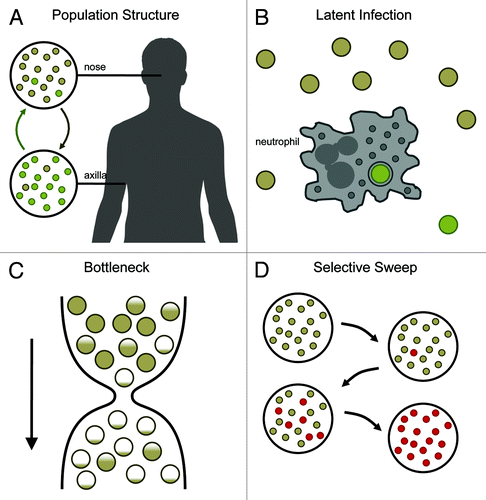Figures & data
Figure 1. Evolutionary processes that may underlie observed patterns of mutation between carried and invasive bacteria. (A) Gene flow between bacterial sub-populations may generate genetic heterogeneity. In the example, bacteria normally resident in the nose (gold cocci) and axilla (green cocci) occasionally migrate between sites, leading to mixed populations. (B) Latent bacterial populations may persist in privileged sites only to re-emerge later. For example, the contemporary population (gold) may be re-seeded with ancestral bacteria (green) lying dormant in neutrophil vesicles. (C) During a population bottleneck natural selection is weak, allowing an increase in frequency of deleterious mutants. Prior to the bottleneck the bacterial population contains a fitness gradient ranging from the optimal genotype (solid gold) to deleterious mutants (partially gold). Survival during the bottleneck is random, and deleterious mutants may rise to high frequency by chance. (D) Mutants that have a selective advantage may sweep through the population. In the example, a single mutant (red) out-replicates the original genotype (gold). Over time, the fitter mutant replaces the original genotype.
